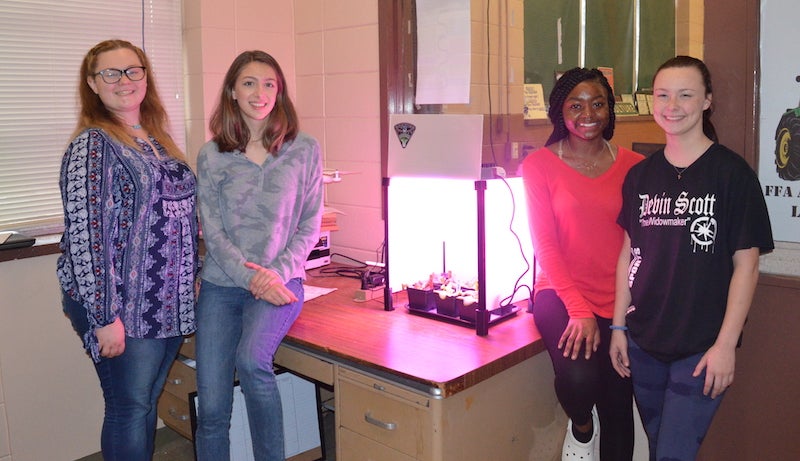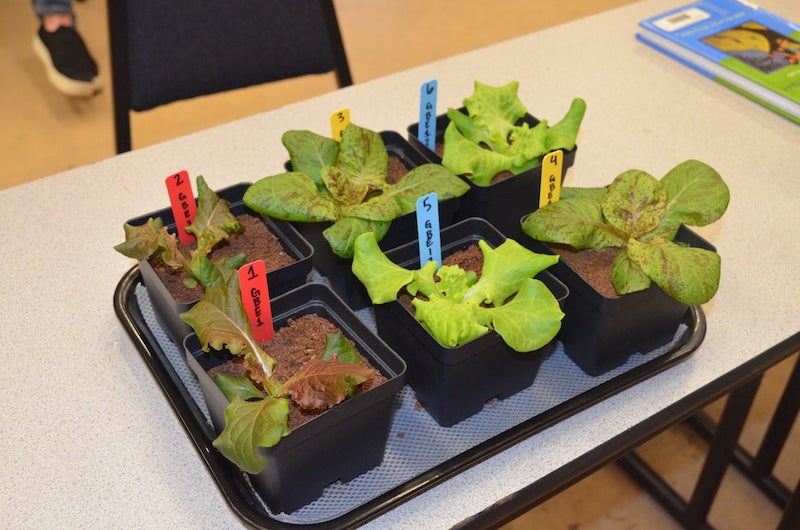Students test plants for NASA partnership
Published 12:31 pm Wednesday, February 5, 2020
|
Getting your Trinity Audio player ready...
|
By JOYANNA LOVE/ Senior Staff Writer
Experiments by local students are helping determine what fresh produce astronauts could grow in space.
Select students in agriculture classes at LeCroy Career Technical Center and Chilton County High School participated in collecting data on lettuce that will be given to Fairchild Tropical Botanic Garden and eventually NASA to help determine what plants will grow well in the controlled mini-greenhouse the project used. The greenhouse system is similar to one on the International Space Station.
“NASA is in the process of going back to the moon … President (Donald) Trump has kind of made it a focus to get us back to the moon with the hopes of making it back to Mars,” LCTC horticulture teacher Landon Lowery said. “The astronauts right now they are having to eat freeze dried foods — very little fresh foods at all … For going to Mars, that is about a three- to five-month journey, so they are needing fresh produce to give them the ability of having nutrients. Freeze dried food loses a lot of the nutrition.”
He said NASA is also hoping to be able to add flavor to the astronauts’ diet through the fresh produce.
“The idea of sending a seed up, something that will grow really fast that they can either use on the journey to Mars or better yet once they get there and then can start growing their own food,” Lowery said.
Lowery said he and CCHS agriscience teacher Marlon Harton found out about Growing Beyond Earth program, a partnership between Fairchild and NASA, at the National FFA Convention.
“The system was designed at Fairchild, and it was set up for Title I schools to set up STEM education processes and get kids introduced to how scientific research works,” Lowery said.
The system is a miniature greenhouse that allows students to control the color and intensity of light and water intake in a 2 feet by 2 feet area. Variables are determined by Fairchild, so each of the classes are testing the same thing on the same week.
“They compile all of the school’s data and you can get an updated weekly comparison of how our plants are doing versus the average of all schools,” Lowery said. “There are about 1,000 schools across the U.S. (participating). The idea there was for NASA to do this kind of research it would take thousands upon thousands of dollars, whereas for schools we already have the building and the facility and all to do it, plus they are not having to pay me as the teacher and the students as the scientists. So, they are getting 1,000 replication data points in a four-week period that would take them years to get (otherwise).”
LeCroy students were working with three varieties of lettuce. The control in the experiment was Outredgeous, while the experimental varieties were Black Seeded Simpson and Flashy Trout’s Back. All of the varieties were a leaf lettuce (similar to romaine lettuce.)
A specialized soil with fertilizer pellets was used to grow the plants. LCTC student Isabella Jones said the fertilizer releases slowly over the course of a month or two.
Outredgeous was used as the control in the experiment because it has been used in previous years.
“We are comparing everything back to it,” Lowery said.
Lowery said schools in the program were assigned different varieties.
The miniature greenhouse came to the school as a kit that students had to assemble.
“We had to water it and measure it and make sure that everything was the same (for each of the six plants),” LCTC student Laderricka Duniga said.
LCTC student Kaitlyn Jones said the project focused on how large the plants could grow and how healthy they were.
The project also helped the student determine how often the plants should be watered.
“We came back one day, and they were wilted, but the next day we watered them, and they were fine,” Jones said.
The plants had gone about four days without being watered.
Lowery said this data will allow NASA to create a watering schedule and determine how much water needs to be sent with the team for the plants.
Data recorded during the month-long experiment included measuring the plans, amount of water given to the plants and weighing the harvested plants. Controlling humidity was a challenge.
LCTC student Dallas Day said she had been interested in how a lack of gravity in space would impact plants.
“Plants when the roots grow gravity tells them which way (for) the roots to grow,” Day said.
Lowery explained that the variety of plants chosen for the experiment do not need gravity to know which direction to grow, so a lack of gravity would not have a negative impact.
Checking on the plants was the first thing Kaitlyn Jones and Duniga said they enjoyed watching the plants grow. Isabella Jones said she enjoyed growing the plants because she wants to have a career in horticulture.
Kaitlyn Jones and Duniga will also be using the data collected for their FFA Agriscience Fair project.
Further opportunities with the program include students testing their own variables and presenting the scientific research at the Kennedy Space Center. Lowery said this is something he hopes to be able to take advantage of in the future.








